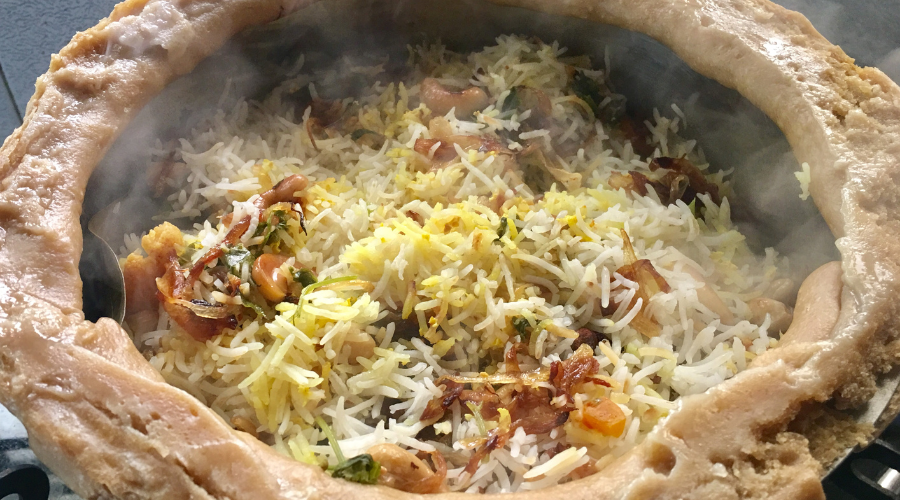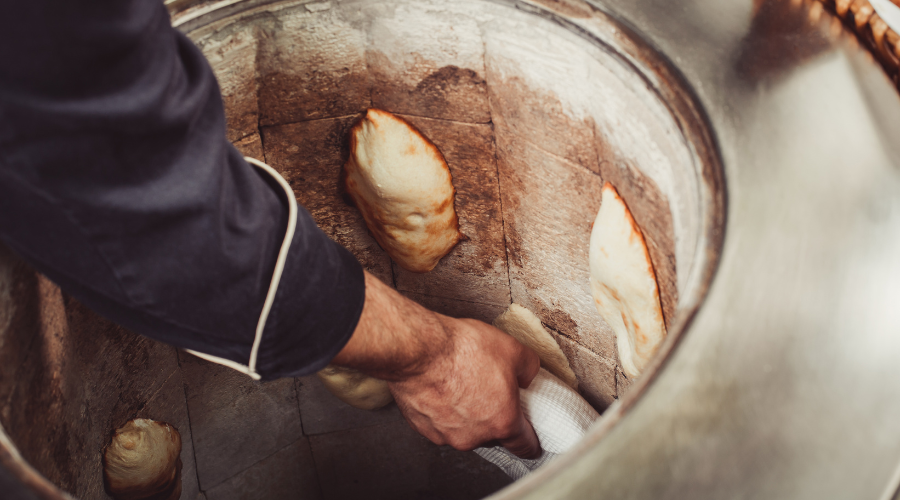As one of the greatest food cultures, India is well known for its rich history of time-honoured cooking. One of the most ancient and flavourful techniques is Pit cooking, which imparts the earthy, smoky flavour to the meat and vegetables and conserves fuel. “In an era of instant meals and quick fixes, pit cooking reminds us of the value of patience, connection to the land, and the art of anticipation,” adds Chef Jatinder Pal Singh in an exclusive conversation with Outlook Traveller Eats.
Pit cooking is one of the oldest culinary techniques known to humankind. Its origin dates back to various communities and their respective traditions, from the Maori community of New Zealand practising hangi to the Imu cooking in Polynesian islands, which involved digging a pit and layering it with heated stones. The indigenous tribes of North America and the tribes of the Fiji Islands had their variations of using heated stones and covering food with leaves or mats as underground ovens.
Pit Cooking In India
Chef Jatinder Pal Singh discussed how pit cooking was deeply embedded in rural traditions and ancient rituals in India. “The historical references trace back to the Vedic period, where sacrificial fire rituals—or yajnas—frequently involved cooking offerings in earthen fire pits,” added Singh. The process of pit cooking begins by digging a 2 to 3-foot deep hole that is made depending on the quantity to be cooked. Next, fueling the fire with wood, dried leaves, or cow dung cakes, which are then burnt to form hot embers. The pit is lined with heated stones and bricks to retain more heat. Once the flames die down, leaving behind the soft heat of glowing embers, the meat/vegetables are marinated and wrapped in banana/sal leaves, clay or dough. The food is covered and buried with earth or cow dung to trap the steam. The slow heat and natural insulation allow the food to simmer in its juices for hours, often overnight, revealing a moist, smoky, earthy dish.
Not Limited To Just One Region

Many iconic Indian dishes owe their origins to the variations of pit cooking. One such technique was initially developed in Persia and brought to India via Afghanistan. “This method fills a pot with marinated meat and spices, sealing it with dough and slow-cooking in a dug-out pit with hot charcoal,” added Singh. The flavours unfold over hours of gentle heat, creating an aroma that truly mesmerises the diners. India’s diverse culinary landscape has kept pit cooking alive in many regional forms. Rajasthan’s khad khargosh is where the wild rabbit or game meat is cooked underground. Hyderabad and Telangana take on dum biryani by burying the handi under the earth. Lucknow’s Persian-inspired method, zamin doz, cooking sealed pots in pits. The Goan Pit Seafood is where shellfish and other fish are cooked under burlap and coal in sandy pits. The Parsi/Gujarati method of Umbhadiyu clay pot meals is slow-cooked with mango leaves in a fire pit. Pit cooking in the Himalayas uses hot stones instead of embers for slow roasting. The tribal region of Andaman practices this technique by wrapping Game meat in leaves and cooking with hot stones in pits.
Chefs From India Share Their Experiences and Memories With Pit Cooking
In an interesting conversation with Outlook Traveller Eats, chefs from India share their magical experience with pit cooking. Chef Jatinder Pal Singh (Director of Food and Beverage at the Sheraton Grand Bengaluru Whitefield Hotel & Convention Centre) recalls having Atta Chicken in Amritsar with his grandfather. “I watched in awe as the cook lifted a hardened dough shell out of a clay tandoor. When he cracked it open, a billow of aromatic steam rushed out. Inside was the most beautifully cooked chicken—tender, juicy, and coated in slow-roasted spices,” added Singh.
Chef Satya Kumar(Executive Chef, Sheraton Hyderabad Hotel) describes pit cooking as magic. He remembers his childhood Sundays in his grandparents’ backyard, where he saw the rustic theatre for the first time. “The fire crackling, the scent of woodsmoke in the air, and those banana-leaf-wrapped parcels of meat and jackfruit tucked gently into the glowing pit. My cousins and I would circle impatiently, as that rich, smoky aroma wrapped itself around us like a warm embrace,” said Kumar.
Chef Sumit Kumar(Corporate Chef, Leisure Hotels Group) shares his memory of village feasts from Bihar. “I remember watching my elders marinate jackfruit/ goat in hand-pounded masalas, wrap it in leaves, and bury it under the earth beside glowing embers. By morning, the village would awaken to a smoky, spiced, and earthy aroma,” said Kumar.
Where to experience the Magic of Pit Cooking.
- Jamoon is an eco-retreat nestled in Corbett by the Ramganga River. Here, one can relish this ancestral tradition through curated Kumaoni pit cooking sessions. Enjoy local meats and seasonal vegetables cooked with stone-ground spices, served under a sky full of stars.
- Zarf, Sheraton Grand Whitefield presents delectable Atta chicken upon 24 hours’ prior request.
- Tamara Coorg excels in the “Coorgi style” pit cooking, slow-cooking meat and vegetables underground in banana leaves and spice pastes.






















